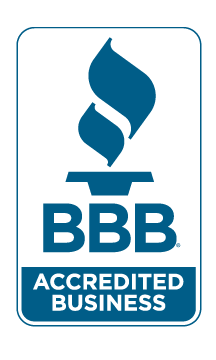Many agents who sell Final Expense insurance eventually consider expanding their business by selling Mortgage Protection. At first glance, these two products might seem worlds apart, but in reality, they share more similarities than differences. Agents who are already successful in Final Expense sales will find that making the shift to Mortgage Protection is not just seamless but also a highly profitable decision.
In this article, we’ll break down the key similarities between Final Expense and Mortgage Protection, including the sales process, client needs, product structures, and how an agent can smoothly transition into this market.
One-Call Close Sales Process
One of the biggest advantages of both Final Expense and Mortgage Protection sales is that they follow a one-call close model. Unlike other types of life insurance, which may involve multiple meetings, detailed financial planning, and extensive underwriting, both Final Expense and Mortgage Protection are designed for quick, efficient sales.
When selling Final Expense, agents are trained to identify the client’s need, present a solution, and close the sale in one meeting—whether that’s over the phone or in person. The same process applies to Mortgage Protection. The goal is to educate the client on how the policy meets their needs, address objections, and secure a commitment before the call ends.
If you’ve mastered the one-call close in Final Expense, you already have the foundation needed to succeed in the Mortgage Protection market. The only real adjustment is fine-tuning your approach to fit the slightly different needs of Mortgage Protection clients.
Similar Products with Slightly Different Underwriting
Final Expense and Mortgage Protection life insurance policies are structured in very similar ways. Both provide a lump-sum death benefit designed to help families cover financial obligations after a loved one passes away. However, there are some key differences:
- Final Expense policies are typically whole life insurance with lower face amounts ($5,000–$40,000) designed to cover funeral costs and small debts.
- Mortgage Protection is often based on term life insurance, covering a mortgage balance (typically $100,000 and up) for a set number of years.
Despite this difference in policy type, the sales approach remains the same. Both products focus on protecting a loved one from financial hardship, and both are simplified issue, meaning they require no medical exams and are based on basic health questions.
One key difference is the lookback period for health conditions. Final Expense underwriting is typically more lenient, covering clients with diabetes, heart issues, and COPD with minimal restrictions. Mortgage Protection carriers, on the other hand, may have a longer lookback period, meaning a client with a major health event in the past few years might not qualify for the lowest rates. However, many carriers offer non-medical options with competitive pricing, keeping the transition easy for agents.
Understanding the Client’s Needs in Final Expense vs. Mortgage Protection
The biggest shift when moving from Final Expense to Mortgage Protection life insurance is in understanding why the client is buying the policy.
- Final Expense Clients are often seniors who recognize that their family will struggle with funeral costs and leftover debts. Their main concern is ensuring their children or spouse aren’t left with a financial burden.
- Mortgage Protection Clients tend to be younger (ages 30–60) and are actively working. Their concern is protecting their home and family in case of unexpected death, disability, or job loss.
The emotional appeal in both cases is very similar. Whether it’s covering a mortgage or a funeral, clients don’t want to leave their loved ones struggling financially. The agent’s job remains the same: identify the risk, present a simple and affordable solution, and handle objections with empathy.
Leads: Higher Intent, but Same Sales Approach
Leads in both markets come from people actively looking for coverage. In Final Expense, leads are typically seniors responding to direct mail, Facebook ads, or TV commercials about covering funeral expenses. Mortgage Protection leads, on the other hand, are usually new or recent homebuyers responding to mailers or online ads about protecting their mortgage.
One advantage of Mortgage Protection leads is that they tend to be higher intent than Final Expense leads. These clients have just made a major financial commitment (buying a home), and many assume mortgage protection is a mandatory part of the home-buying process. This means fewer objections and a smoother closing process for the agent.
That said, the same sales principles apply to both:
- Call the lead quickly while interest is high
- Establish rapport and position yourself as a trusted advisor
- Uncover the need and present the right solution
- Handle objections confidently
- Close the sale in one meeting
Adding Mortgage Protection: More Revenue with Minimal Change
Many agents hesitate to add Mortgage Protection to their offerings, thinking it will require a completely different skill set. The truth is, if you’re successfully selling Final Expense, you’re already 90% of the way there. The adjustments are minor:
- Learning a few additional carriers and their term products
- Understanding which health conditions affect Mortgage Protection underwriting
- Shifting your pitch from covering funeral costs to protecting a home and income
The benefits of making this transition far outweigh the minor learning curve:
- More sales opportunities. Mortgage Protection expands your target audience beyond seniors, allowing you to reach a younger demographic, including first-time homebuyers and young families.
- More sales opportunities – You can now sell to a younger demographic, increasing your pool of prospects.
- Better retention – Mortgage Protection clients are less likely to lapse their policies compared to Final Expense clients.
Conclusion: A Simple and Smart Next Step
For agents looking to grow their business, moving from Final Expense to Mortgage Protection is a natural and easy transition. The sales process is nearly identical, the client psychology is similar, and the products are familiar—with just a few small differences in underwriting and positioning.
By adding Mortgage Protection to your portfolio, you increase your income potential while continuing to serve families in a meaningful way. If you’re already comfortable with the one-call close and consultative sales approach of Final Expense, you’re more than ready to succeed in Mortgage Protection.
So why not take the next step? Start by learning a few Mortgage Protection carriers, adjust your approach slightly, and watch your sales (and commissions) grow!
© Copyright











